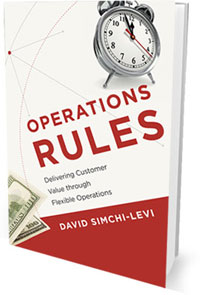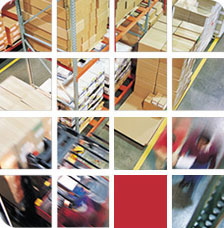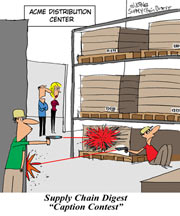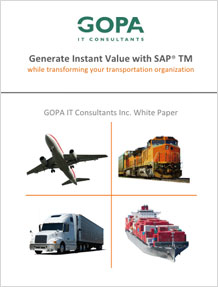Can - and Should - Western Manufacturing be Saved? Part 5
I have written a series of these First Thoughts pieces over the past several years, and what is perhaps more interesting than anything is that the external context for my thoughts and questions has actually changed considerably over that time.
It started really from the financial crisis and resulting deep depression, when I and others were asking if the US (and the UK) had simply become too focused on the financial sector, and that both countries and others needed to get more back to being "product focused" economies.
The "can we?" part of my question was really relative to whether the US and others in the West + Japan could really compete on a global stage with China and other Asian manufacturing "tigers." One of the most powerful books I have read was 2007's "Dragon's at Your Door" by Ming Zeng and Peter Williamson, which described in scary detail how Chinese firms were using relentless "cost innovation" to take over dominance in industry after industry.
The story in the book of how China's CIMC over a relatively few years came from nowhere to dominate the global market for building shipping containers is an especially powerful example.
Later on in this series, I was also joining others in asking whether the US and maybe other Western countries had simply lost the will to compete in large scale manufacturing. Lack of technical know-how, high taxes, environmental regulations, lack of real government support and more were simply driving US manufacturers offshore, many of which actually wanted to make things here.
As I wrote in part 4 of this series late last year, for example, the majority of the steel going into the new San Francisco-Oakland Bay Bridge is being supplied by a Chinese company that had little existing bridge steel making experience.
It is a mammoth project. Despite a still modestly strong US steel industry, a New York Times article quoted one expert as saying "I don't think the US fabrication industry could put a project like this together. Most US companies don't have these types of warehouses, equipment or the cash flow [that the Chinese companies do]." The winning Chinese company had built a multi-million warehouse to hold the steel on spec that it might get the business.
But in the last 18 months or so, a number of studies have found rising wage costs in China are eroding its cost advantage in many industries. Boston Consulting Group has forecast there will be parity in net costs between the Eastern regions of China and the lowest US cost regions by 2015. And, in fact, there is anecdotal evidence (NCR, Whirlpool, Caterpillar) of companies bringing manufacturing back to the US. Manufacturing has also well outperformed the rest of the economy since the bottom of the recession.
There is clearly some hope in the air. Is it real?
That was the question on the table at a sold out, major conference on The Future of US Manufacturing held at MIT in Cambridge in May. I attended Day 1 of the two-day event, and it was outstanding, with high profile speakers. I am going to summarize some of the key sessions starting in the next paragraph, but please allow me to first say that connected with that event, MIT has partnered with SCDigest on an important survey on US manufacturing and the nascent reshoring trend.
We need your help. The survey has been out for a couple weeks, and we have decent numbers so far, but we frankly want great numbers. The US government provided some suggestions on the survey, and I can promise it is interested in the results. How US manufacturing plays out (up, down, sideways) will not only have big implications for supply chain strategy, but also for the overall economy, and will be a major driver of the future direction of the country. This is important stuff for us and our children.
Please support us. More about the Research and Link to the Survey.
I got a chance to meet opening session speaker Rodney Brooks, a former MIT professor who was behind the company that gave us Roomba, the robotic vacuum cleaner most of you probably know. But what you probably don't know is that he also has a company called Rethink Robotics, which is building a new generation of industrial robots that it hoped will change the manufacturing paradigm dramatically.
Brooks noted that today, industrial robots are scary things, often literally walled off from workers for safety reasons. He envisions a new generation of robots that operate right alongside other workers – think 3CPO from the Star Wars movies. In fact, he showed a video clip of a robot picking up a hammer with a robotic hand and sort of testing its weight and balance, just like a human might. It is expected Rethink will release its first commercial products this fall.
The larger point is this type of development not only could change the face of manufacturing in many sectors, but could lead to competitive advantage in the US not only from this change, but on the production of these types of robots that are being built right here. Or will the Chinese simply take the technology over, in terms of faster adoption and/or "acquiring" the technology? Key question.
Labor relations/union issues are to me still a key part of this equation. There is no question that private sector unions are in decline now, and the tough economy plus the threat of offshoring have kept manufacturing wages flat here while they rise in China.
But that isn't really good news. For the good of the economy and decency, we actually want rages rising a little over inflation and a little under productivity gains. That's a win-win for workers and business.
I met Jeff Turner, CEO of Spirit Aerosystems, at lunch, and what an interesting man. Part of that is the approach he has taken at Spirit, a parts maker spun out of Boeing, with regard to labor relations. In his morning presentation, he said that as the union contracts were ending for the now independent company, Turner realized the longstanding "win-lose" contract model in the highly cyclical aerospace industry simply had to change.
Every agreement led to a sense that either the company or the union won that battle, and which side won was usually a reflection of economic conditions for the aerospace industry at the time. In better times, the union tended to "win", while the company would usually be seen as prevailing in weaker economic periods.
Second, when the inevitable downturns hit the industry, Turner said the usual pattern of steep layoffs would occur, giving the employees, especially newer ones, little in the way of job stability or security.
"That's no way to run a business, a family, or a nation," Turner said. We need more thinkers like this don't we?
Greatly summarizing, the resulting contract was for 10 years, not the normal three, provided for just a few small guaranteed wage increases, and added a significant variable pay element on both the upside and the downside. Importantly, management is also on a variable plan. Spirit also made commitments to the workers about not going offshore. The workers and the company are happy and thriving.
Notably, Turner told me at lunch that Spirit has eschewed many overtures from China to make product there, including attractive incentives, because the strings attached to those offers always end with a path that gives China access to Spirit's intellectual property and know-how. So Spirit says no. Don't we also need more Western CEOs that think like this, not just what is in their own short-term interest in giving away long term advantage for short term gains in China's market?
Wish I had more room for the many great presentations, but will end with MIT's Olivier de Weck, who is involved in a major study on the real impact of manufacturing on the economy, and the complex interactions involved, in a project called Production in the Innovation Economy (PIE).
He noted that contrary to some perceptions, US share of manufacturing "value add" has continued to rise nicely since the 1980s, now up to about $1.8 trillion dollars, or 20% of the globe's total value add, as of 2010. China of course has risen at an incredible rate, and is now roughly on par with the US. Japan - amazingly it seems now - actually caught the US in 1994, but has gone down and sideways since and now trails by nearly a trillion dollars. Europe is increasing its value add at a much slower pace than the US.
de Weck noted that China is now working hard to move upstream into more complex, higher value-added products, driven in part by a clear government strategy to do so. We reported last week on how Chinese manufacturers are hungrily buying robots, not only to reduce rapidly rising labor costs, but because many advanced products, from autos to high tech, need robots to deliver the production quality needed to compete.
I was also very interested in de Weck's view that there are real opportunities to produce "intermediate" volumes of goods - in between small lots and mass production - economically through new technology. If true, that would likely drive or keep a lot of manufacturing here, for total supply chain cost reasons.
One clear message from de Weck and others over the conference was that large scale manufacturing in terms of employing thousands of workers at a factory is probably gone forever. But that doesn't diminish the value of US manufacturing. These fewer, more skilled jobs will be higher paid, and will drive many other jobs in suppliers and services for each of the jobs created in manufacturing.
Can and should Western manufacturing be saved? I say yes and yes. But it is unlikely to just happen on its own.
|












